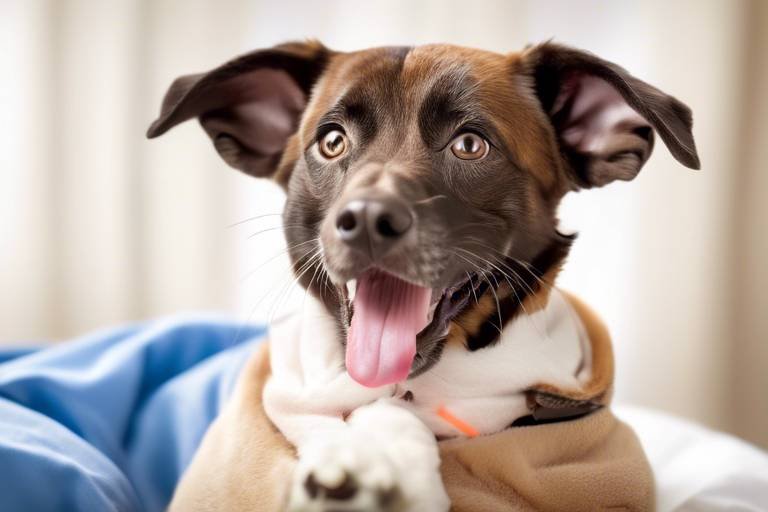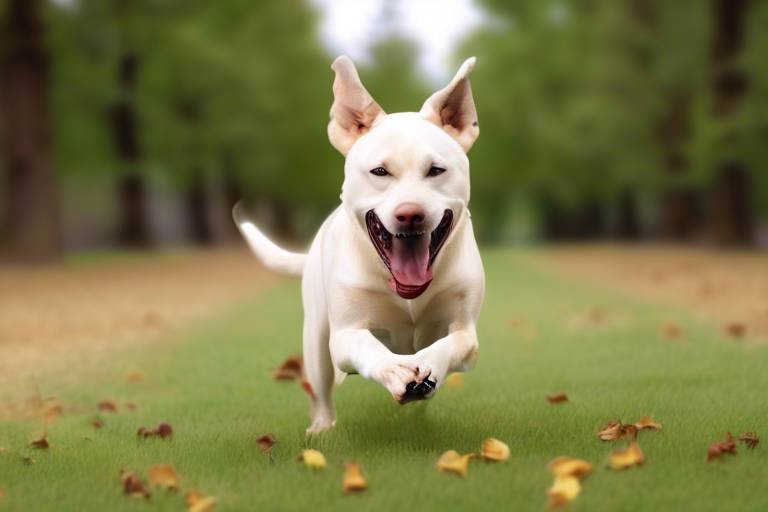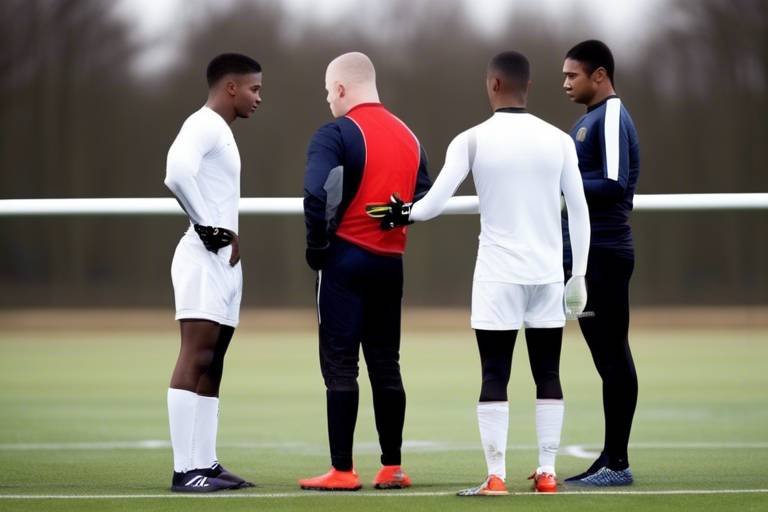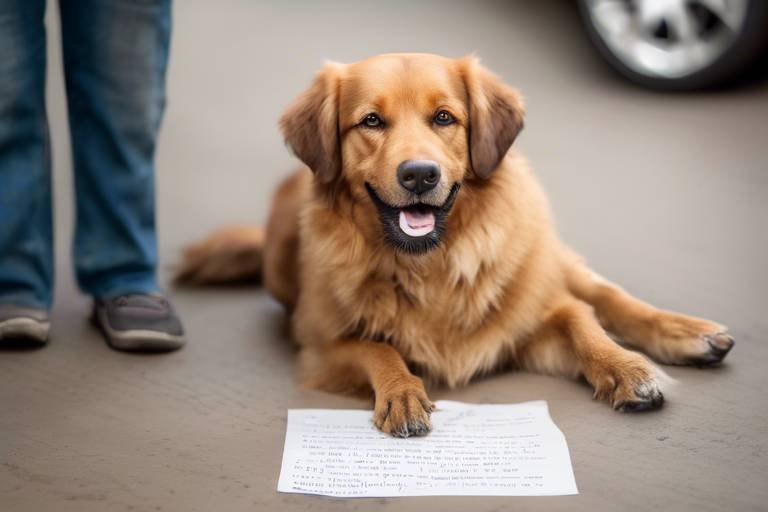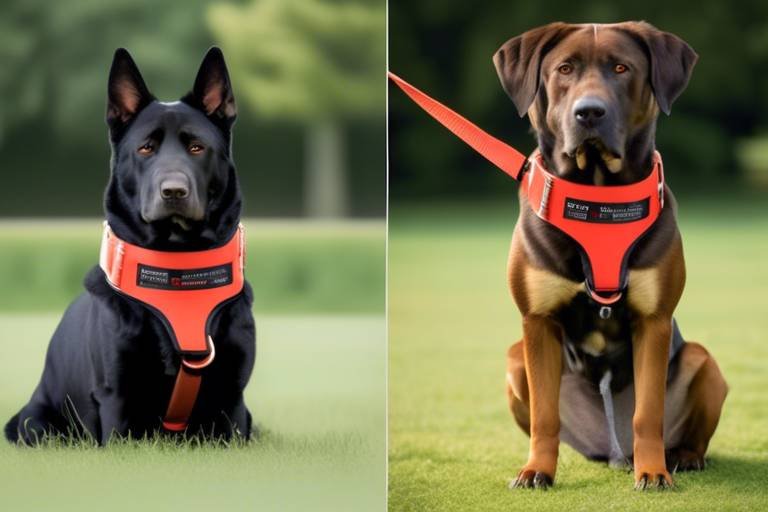How to Teach Your Dog to Navigate a Maze
This article explores effective methods and tips for training your dog to successfully navigate a maze, enhancing their problem-solving skills and providing fun physical and mental stimulation. Imagine watching your furry friend darting through a maze, tail wagging with excitement, as they tackle each twist and turn with confidence. Not only is maze training a wonderful way to bond with your dog, but it also offers them a fantastic outlet for their energy and intelligence. So, are you ready to embark on this thrilling adventure with your pup? Let’s dive in!
Before diving into maze training, it's essential to understand your dog's cognitive abilities. Knowing how dogs learn will help you tailor your training approach for better results. Just like humans, dogs have different learning styles. Some might pick up new tricks quickly, while others may need a little more time and patience. Dogs primarily learn through association and repetition. This means that when they receive a reward for a specific behavior, they’re more likely to repeat that action in the future. So, understanding your dog's unique personality can make all the difference in how effectively they learn to navigate a maze.
Selecting an appropriate maze is crucial for your dog's training. Consider factors like size, complexity, and materials to ensure a safe and engaging experience for your furry friend. A maze that's too complicated may frustrate your dog, while one that's too simple might not provide enough of a challenge. Start with a small, basic maze made of soft materials, like cardboard or fabric, and gradually introduce more complex designs as your dog becomes more adept. Remember, the goal is to keep your dog engaged and excited about the task at hand!
Teaching fundamental commands like sit, stay, and come forms the foundation of effective maze training. These commands will help your dog understand expectations and navigate the maze more efficiently. For instance, if you ask your dog to stay at the entrance of the maze until you give them the go-ahead, it reinforces their ability to follow directions. Consistency is key here; the more you practice these commands, the more instinctive they will become for your dog.
Positive reinforcement is a powerful training technique that encourages desired behaviors. Rewarding your dog with treats or praise will motivate them to tackle the maze challenges with enthusiasm. Think of it as a fun game where your dog gets to earn rewards for their cleverness! When your dog successfully navigates a portion of the maze, shower them with affection and a tasty treat. This not only boosts their confidence but also strengthens the bond between you and your furry companion.
Start with simple maze designs and gradually increase complexity as your dog becomes more confident. This gradual approach helps prevent frustration and keeps your dog engaged in the learning process. For example, you might begin with a straight path and then introduce turns and dead ends as your dog masters the basics. Remember, patience is a virtue! Celebrate small victories along the way, and soon enough, your dog will be zipping through the maze like a pro.
Making maze navigation a fun game can enhance your dog's interest and enjoyment. Incorporate toys or treats to create a playful atmosphere that encourages exploration and problem-solving. You could hide treats at various points in the maze or use their favorite toy as a lure to guide them through. This playful element not only makes the training session more enjoyable but also stimulates your dog's natural instincts to explore and solve problems.
Regularly assess your dog's progress and be prepared to adjust your training techniques as needed. Understanding their strengths and weaknesses will help you provide the right level of challenge. If your dog seems to be struggling, it might be time to simplify the maze or slow down the pace of training. Conversely, if they’re breezing through the maze, consider upping the ante with more intricate designs. Remember, every dog learns at their own pace, and the key is to keep the experience positive and rewarding.
Ensuring your dog's safety while navigating the maze is paramount. Keep an eye out for potential hazards and provide a secure environment to foster a positive training experience. Make sure the maze is free from sharp edges or small objects that could pose a choking hazard. Additionally, always supervise your dog during training sessions to prevent accidents and ensure they’re having fun without any risks involved.
- How long does it take to train my dog to navigate a maze? The time it takes varies based on your dog's learning style and the complexity of the maze. Some dogs may catch on quickly, while others may require more time.
- Can any dog learn to navigate a maze? Yes! Most dogs can learn to navigate a maze with the right training techniques and positive reinforcement.
- What should I do if my dog gets frustrated? If your dog shows signs of frustration, take a step back. Simplify the maze and ensure the training remains a fun experience.

Understanding Canine Intelligence
Before we dive headfirst into the exciting world of maze training, it's crucial to understand just how intelligent our furry companions really are. Dogs possess a unique blend of instincts and learned behaviors that make them remarkably adept at problem-solving. Did you know that dogs can learn over 165 words, signals, and commands? This capacity for learning is what sets the stage for effective maze navigation training.
Canine intelligence can be categorized into several types, including adaptive intelligence, working intelligence, and instinctive intelligence. Each type plays a role in how your dog interacts with their environment and learns new tasks. For instance, adaptive intelligence refers to how well a dog can solve problems on their own, while working intelligence relates to how well they can learn commands and tasks from their human companions. Instinctive intelligence is linked to the natural skills that different breeds have, such as herding or retrieving.
Understanding these facets of canine intelligence allows you to tailor your training methods effectively. Here are some key points to consider:
- Attention Span: Dogs have varying attention spans, so it's essential to keep training sessions short and engaging. A bored dog is less likely to learn!
- Learning Styles: Just like humans, dogs have individual learning styles. Some may respond better to visual cues, while others might excel with verbal commands.
- Social Learning: Dogs are social animals and often learn from observing others. This can be a great advantage when training, as they may pick up on cues from you or other dogs.
By recognizing these elements, you can create a personalized training plan that aligns with your dog's unique capabilities. This understanding not only enhances their ability to navigate mazes but also strengthens the bond between you and your pet. Remember, training should be a fun and rewarding experience for both of you!
In the end, the more you know about your dog's intelligence, the better equipped you'll be to guide them through the challenges of maze navigation. So, let's get ready to unleash their potential and embark on this exciting journey together!
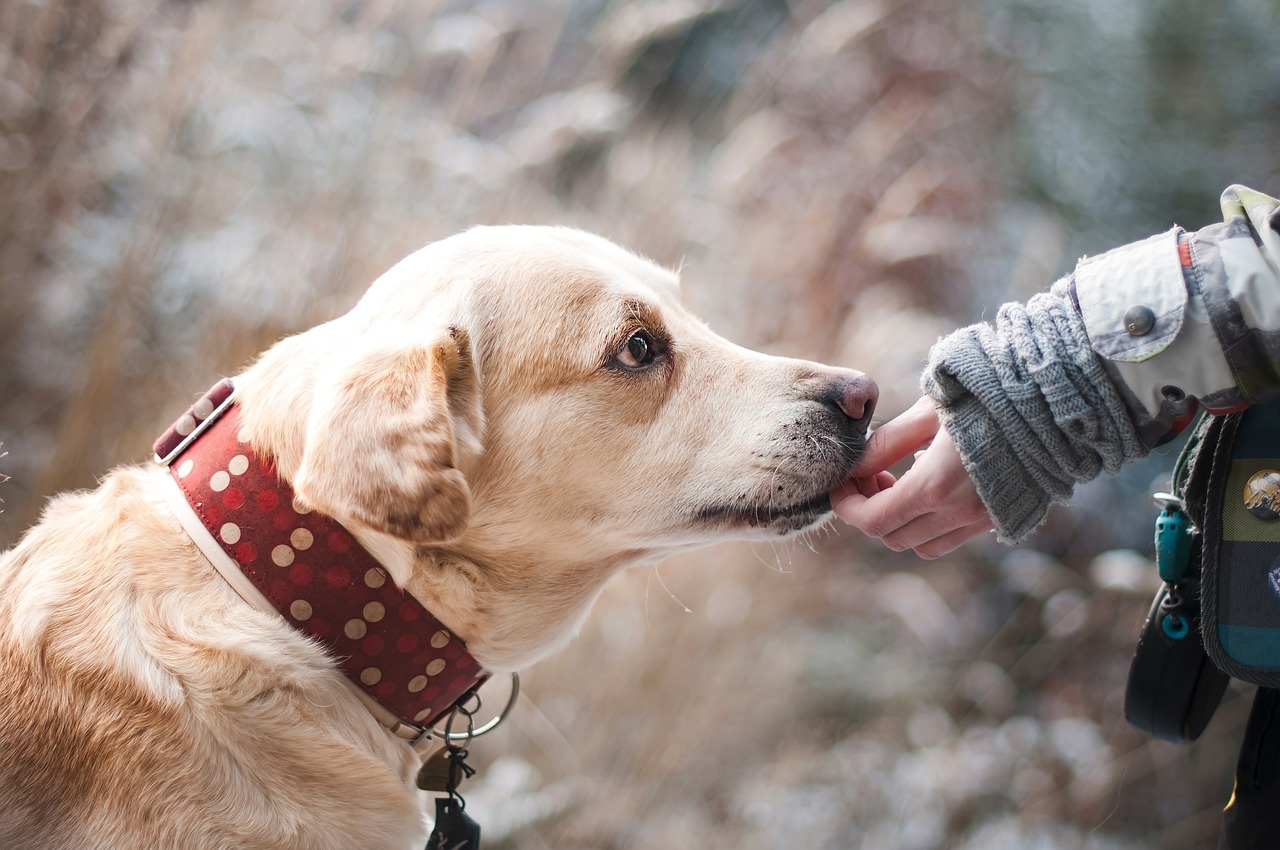
Choosing the Right Maze
When it comes to training your dog to navigate a maze, the first step is to choose the right maze. This decision can significantly impact your dog's learning experience and overall enjoyment. So, what should you consider when selecting a maze? Let's break it down!
First and foremost, you need to think about the size of the maze. A maze that is too large may overwhelm your dog, while one that is too small might not provide enough challenge. Ideally, the maze should be spacious enough to allow your dog to move around freely, but compact enough to keep their focus. A good rule of thumb is to start with a maze that is approximately the same size as your dog, allowing them to explore without feeling lost.
Next, consider the complexity of the maze. For beginners, simple mazes with a few twists and turns are perfect. As your dog becomes more adept at navigating, you can introduce more intricate designs. This gradual increase in complexity not only keeps your dog engaged but also builds their confidence. Think of it like leveling up in a video game; each new maze should present a new challenge that feels rewarding to conquer!
The materials used in the maze are equally important. You want to ensure that the maze is made from safe, non-toxic materials that can withstand your dog's enthusiastic exploration. Options like plastic or soft wood can be great, but make sure there are no sharp edges or small parts that could pose a choking hazard. If you're feeling creative, you might even consider building a maze from cardboard boxes, which can be easily customized and is safe for your dog.
Additionally, think about the environment where the maze will be set up. Is it indoors or outdoors? If outdoors, make sure the area is secure and free from distractions that might pull your dog’s attention away. Indoor mazes can be a great option, especially if you live in a place with inclement weather. Just remember to keep the space well-lit and free from obstacles that could cause your dog to trip or get stuck.
Finally, don’t forget to test the maze yourself before introducing it to your dog. Walk through it to ensure that it is safe and that the pathways are clear. This way, you can anticipate any potential issues your dog might encounter and adjust the design accordingly. After all, you want your furry friend to have a fun and rewarding experience!
In summary, when choosing the right maze for your dog, consider the size, complexity, materials, environment, and safety. With the right maze, you’ll not only enhance your dog's problem-solving skills but also create a fun bonding experience that strengthens your relationship. Remember, the journey through the maze should be just as enjoyable as the destination!

Basic Commands for Training
When it comes to teaching your dog to navigate a maze, laying a solid foundation with basic commands is crucial. Think of these commands as the building blocks of communication between you and your furry friend. Just like a child learns to walk before they can run, your dog needs to master simple commands before tackling more complex tasks. The three fundamental commands you should focus on are sit, stay, and come.
The command sit is one of the easiest for dogs to learn and serves as a great starting point. It’s not just about getting your dog to park their behind on the ground; it’s about teaching them to focus on you and listen to your instructions. Once your dog has mastered sitting, you can move on to the stay command. This command is all about self-control and patience. By teaching your dog to stay in one spot, you’re giving them a sense of security and helping them understand boundaries. Imagine asking your dog to stay while you set up the maze; this command ensures they won’t dart off and get distracted.
Finally, the come command is essential for safety and recall. You want your dog to be able to return to you whenever you call, especially when they’re in a maze filled with intriguing smells and sights. The combination of these three commands will create a strong communication channel between you and your dog, making the maze training process smoother and more enjoyable.
Once your dog is comfortable with these basic commands, you can incorporate them into maze training. For instance, you can start by having your dog sit at the entrance of the maze. Then, as they navigate through, you can use the stay command to encourage them to pause and think before moving forward. And when they successfully reach the end, call them with come to celebrate their achievement!
To ensure your training is effective, consider using positive reinforcement. Every time your dog successfully follows a command, reward them with a treat or lots of praise. This not only boosts their confidence but also makes them eager to learn more. Remember, consistency is key! Use the same commands and gestures each time to avoid confusing your dog.
As you progress, you can introduce more complex commands or variations to keep your dog engaged. For example, you might want to teach them to turn left or turn right as they navigate the maze. You can also create a fun challenge by asking them to go back if they hit a dead end. The possibilities are endless!
In summary, mastering basic commands is not just about obedience; it’s about building a strong bond with your dog and enhancing their problem-solving skills. With patience and practice, your dog will not only navigate the maze with confidence but will also enjoy the journey of learning and exploring with you.
Q: How long does it take for a dog to learn basic commands?
A: The time varies depending on the dog’s age, breed, and previous training. Generally, with consistent practice, most dogs can learn basic commands within a few weeks.
Q: Can I train an older dog to navigate a maze?
A: Absolutely! Older dogs can learn new tricks and commands, though they may require a bit more patience and encouragement.
Q: What if my dog seems uninterested in the maze?
A: Try to make the training more engaging by using their favorite toys or treats as rewards. Sometimes, a change in approach can reignite their interest.
Q: How do I know if my dog is ready for more complex commands?
A: If your dog consistently follows basic commands without hesitation, it’s a good sign they’re ready for more challenges. Always observe their body language for signs of frustration or confusion.
This article explores effective methods and tips for training your dog to successfully navigate a maze, enhancing their problem-solving skills and providing fun physical and mental stimulation.
Before diving into maze training, it's essential to understand your dog's cognitive abilities. Knowing how dogs learn will help you tailor your training approach for better results.
Selecting an appropriate maze is crucial for your dog's training. Consider factors like size, complexity, and materials to ensure a safe and engaging experience for your furry friend.
Teaching fundamental commands like sit, stay, and come forms the foundation of effective maze training. These commands will help your dog understand expectations and navigate the maze more efficiently.
The command sit is one of the first and most important commands to teach your dog. It serves as a building block for more advanced commands and behaviors. When your dog learns to sit, they not only become more obedient but also gain the ability to focus on you and the task at hand. This is crucial when navigating a maze, as it allows them to pause and evaluate their surroundings before making a move.
To teach your dog to sit, start by holding a treat close to their nose. As they sniff the treat, slowly move your hand upward. This motion will cause their head to tilt back, and naturally, their bottom will lower to the ground. The moment they sit, say "sit" and reward them with the treat. This positive reinforcement will help them associate the command with the action.
Here’s a simple step-by-step guide to teaching sit:
- Get your dog’s attention with a treat.
- Move the treat above their nose, then back over their head.
- As their head goes up, their bottom will go down.
- Once they are in the sitting position, say “sit” and give them the treat.
- Repeat this process several times until they sit on command.
It's important to practice this command in various environments. Start in a quiet space and gradually introduce distractions as your dog becomes more proficient. This will help them learn to sit no matter the situation, making it easier for them to focus when navigating through the maze.
Positive reinforcement is a powerful training technique that encourages desired behaviors. Rewarding your dog with treats or praise will motivate them to tackle the maze challenges with enthusiasm.
Start with simple maze designs and gradually increase complexity as your dog becomes more confident. This gradual approach helps prevent frustration and keeps your dog engaged in the learning process.
Making maze navigation a fun game can enhance your dog's interest and enjoyment. Incorporate toys or treats to create a playful atmosphere that encourages exploration and problem-solving.
Regularly assess your dog's progress and be prepared to adjust your training techniques as needed. Understanding their strengths and weaknesses will help you provide the right level of challenge.
Ensuring your dog's safety while navigating the maze is paramount. Keep an eye out for potential hazards and provide a secure environment to foster a positive training experience.
Q: How long does it take to teach my dog to sit?
A: Every dog learns at their own pace, but with consistent practice, most dogs can learn to sit within a few days to a week.
Q: Can I use other rewards besides treats?
A: Absolutely! Many dogs respond well to praise, toys, or playtime as rewards.
Q: What if my dog doesn’t sit right away?
A: Patience is key. If your dog isn't catching on, try breaking the command down into smaller steps or using a higher-value treat.
This article explores effective methods and tips for training your dog to successfully navigate a maze, enhancing their problem-solving skills and providing fun physical and mental stimulation.
Before diving into maze training, it's essential to understand your dog's cognitive abilities. Knowing how dogs learn will help you tailor your training approach for better results. Dogs are incredibly intelligent creatures, capable of problem-solving and learning from their experiences. They possess a unique way of understanding the world around them, often relying on their keen sense of smell and observation skills. By recognizing these traits, you can create a more engaging training environment that plays to their strengths.
Selecting an appropriate maze is crucial for your dog's training. Consider factors like size, complexity, and materials to ensure a safe and engaging experience for your furry friend. A maze that is too complicated can lead to frustration, while one that is too simple may not provide the mental stimulation your dog needs. Look for mazes made of safe materials, and ensure they are spacious enough for your dog to move around comfortably. You can even create a maze in your backyard using cones, boxes, or other objects to customize the challenge based on your dog's skill level.
Teaching fundamental commands like sit, stay, and come forms the foundation of effective maze training. These commands will help your dog understand expectations and navigate the maze more efficiently. For instance, when your dog learns to stay, you can place them at the maze entrance while you set up the course. Once they master these commands, they'll feel more secure and confident in their abilities, making the maze experience enjoyable and rewarding.
Positive reinforcement is a powerful training technique that encourages desired behaviors. Rewarding your dog with treats or praise will motivate them to tackle the maze challenges with enthusiasm. For example, every time your dog successfully navigates a section of the maze, shower them with treats and verbal praise. This not only reinforces their good behavior but also builds a strong bond between you and your furry companion. Remember, consistency is key—always reward them immediately after they complete a task to help them make the connection between the action and the reward.
Start with simple maze designs and gradually increase complexity as your dog becomes more confident. This gradual approach helps prevent frustration and keeps your dog engaged in the learning process. Begin with a straightforward path, allowing your dog to familiarize themselves with the maze concept. As they gain confidence, you can introduce more twists and turns, making the maze progressively challenging. This method not only enhances their skills but also keeps the experience fun and exciting!
Making maze navigation a fun game can enhance your dog's interest and enjoyment. Incorporate toys or treats to create a playful atmosphere that encourages exploration and problem-solving. For instance, you can hide a favorite toy at the end of the maze or scatter treats throughout the course. This not only motivates your dog to navigate the maze but also transforms the training into a delightful adventure. Remember, the more fun your dog has, the more eager they will be to participate in future training sessions.
Regularly assess your dog's progress and be prepared to adjust your training techniques as needed. Understanding their strengths and weaknesses will help you provide the right level of challenge. If you notice your dog struggling with a particular section of the maze, take a step back and simplify the task. Conversely, if they breeze through the maze, it's time to increase the challenge. This adaptability will not only keep your dog engaged but also foster a sense of accomplishment as they conquer each new hurdle.
Ensuring your dog's safety while navigating the maze is paramount. Keep an eye out for potential hazards and provide a secure environment to foster a positive training experience. Always supervise your dog during training sessions to prevent any accidents. Additionally, make sure the maze is free from sharp edges or small objects that could pose a choking hazard. By prioritizing safety, you create a comfortable space where your dog can explore and learn without unnecessary risks.
Q: How long does it take to train my dog to navigate a maze?
A: The time it takes varies based on your dog's age, breed, and prior training experience. Some dogs may pick it up quickly, while others might need more time. Patience and consistency are key!
Q: Can all dogs learn to navigate a maze?
A: Yes! Most dogs can learn to navigate a maze with the right training approach and positive reinforcement. However, some breeds may be more naturally inclined to problem-solve than others.
Q: What if my dog gets frustrated?
A: If your dog shows signs of frustration, take a break and simplify the maze. Gradually reintroduce challenges as they become more comfortable and confident.
This article explores effective methods and tips for training your dog to successfully navigate a maze, enhancing their problem-solving skills and providing fun physical and mental stimulation.
Before diving into maze training, it's essential to understand your dog's cognitive abilities. Knowing how dogs learn will help you tailor your training approach for better results.
Selecting an appropriate maze is crucial for your dog's training. Consider factors like size, complexity, and materials to ensure a safe and engaging experience for your furry friend.
Teaching fundamental commands like sit, stay, and come forms the foundation of effective maze training. These commands will help your dog understand expectations and navigate the maze more efficiently.
The command stay is not just about keeping your dog in one place; it’s a vital skill that enhances their focus and discipline. Think of it as a pause button in the middle of a thrilling game. When you say stay, you’re asking your dog to halt their excitement and concentrate on you. This command is particularly useful when introducing them to a maze, as it allows you to position them correctly before they begin their adventure.
To teach stay, start in a quiet environment with minimal distractions. Here’s a step-by-step approach:
- Begin with your dog in the sit position.
- Hold your hand out in front of you, palm facing your dog, and clearly say stay.
- Take a step back. If your dog remains in place, return and reward them with a treat and praise.
- If they move, gently guide them back to the original spot and try again.
- Gradually increase the distance and duration of the stay before rewarding them.
Consistency is key! Practice this command frequently, and soon your dog will learn that staying put leads to positive outcomes. As they master the command, you can incorporate it into maze training, allowing them to pause and assess their surroundings before proceeding.
Positive reinforcement is a powerful training technique that encourages desired behaviors. Rewarding your dog with treats or praise will motivate them to tackle the maze challenges with enthusiasm.
Start with simple maze designs and gradually increase complexity as your dog becomes more confident. This gradual approach helps prevent frustration and keeps your dog engaged in the learning process.
Making maze navigation a fun game can enhance your dog's interest and enjoyment. Incorporate toys or treats to create a playful atmosphere that encourages exploration and problem-solving.
Regularly assess your dog's progress and be prepared to adjust your training techniques as needed. Understanding their strengths and weaknesses will help you provide the right level of challenge.
Ensuring your dog's safety while navigating the maze is paramount. Keep an eye out for potential hazards and provide a secure environment to foster a positive training experience.
Q: How long does it take to teach my dog to stay?
A: The time varies by dog, but with consistent practice, most dogs can learn to stay within a few weeks.
Q: Can I use treats to train my dog to navigate the maze?
A: Absolutely! Treats are a great way to motivate and reward your dog during maze training.
Q: What if my dog gets frustrated in the maze?
A: If your dog seems frustrated, return to simpler tasks and gradually increase the complexity as they gain confidence.
This article explores effective methods and tips for training your dog to successfully navigate a maze, enhancing their problem-solving skills and providing fun physical and mental stimulation.
Before diving into maze training, it's essential to understand your dog's cognitive abilities. Knowing how dogs learn will help you tailor your training approach for better results. Dogs are incredibly intelligent creatures, capable of learning and adapting to various situations. They might not have the same cognitive skills as humans, but they possess a unique form of intelligence that allows them to solve problems and navigate their surroundings effectively. For instance, did you know that dogs can understand up to 165 words? That's like having a toddler with a pretty decent vocabulary! Understanding this aspect can make maze training a fun and rewarding experience for both you and your pup.
Selecting an appropriate maze is crucial for your dog's training. Consider factors like size, complexity, and materials to ensure a safe and engaging experience for your furry friend. A maze that is too simple might bore your dog, while one that is overly complex could lead to frustration. Start with a basic design that has clear paths and gradually introduce more intricate layouts as your dog becomes more skilled. You can even build a maze in your backyard using simple materials like cardboard boxes or garden stakes. Just remember, the goal is to create a stimulating environment that encourages exploration and learning.
Teaching fundamental commands like sit, stay, and come forms the foundation of effective maze training. These commands will help your dog understand expectations and navigate the maze more efficiently. For example, when your dog learns to "stay," you can place them at the start of the maze and encourage them to remain in place until you signal them to begin. This not only reinforces their training but also establishes a sense of discipline that will serve them well as they tackle more complex challenges.
Positive reinforcement is a powerful training technique that encourages desired behaviors. Rewarding your dog with treats or praise will motivate them to tackle the maze challenges with enthusiasm. Imagine your dog as a child learning to ride a bike; a little encouragement goes a long way! You can use a variety of rewards, such as their favorite treats, toys, or even verbal praise. The key is to be consistent with your rewards and to offer them immediately after your dog successfully navigates a part of the maze. This way, they’ll associate their success with the positive reinforcement, making them eager to try again.
Start with simple maze designs and gradually increase complexity as your dog becomes more confident. This gradual approach helps prevent frustration and keeps your dog engaged in the learning process. For instance, you might begin with a straightforward path that has only a few turns. Once your dog masters that, you can introduce more twists and turns, or even obstacles to navigate around. Think of it like leveling up in a video game; each new challenge should feel rewarding and exciting, not overwhelming.
Making maze navigation a fun game can enhance your dog's interest and enjoyment. Incorporate toys or treats to create a playful atmosphere that encourages exploration and problem-solving. You could hide treats at various points within the maze, prompting your dog to sniff them out. This not only makes the training session more enjoyable but also taps into their natural instincts. Just like how kids love scavenger hunts, dogs thrive on the thrill of discovery!
Regularly assess your dog's progress and be prepared to adjust your training techniques as needed. Understanding their strengths and weaknesses will help you provide the right level of challenge. If your dog seems to struggle with a particular section of the maze, consider simplifying it temporarily or offering more guidance. Remember, the ultimate goal is to foster a positive learning experience, so be patient and flexible as your dog learns.
Ensuring your dog's safety while navigating the maze is paramount. Keep an eye out for potential hazards and provide a secure environment to foster a positive training experience. Make sure the maze is free from sharp objects, and always supervise your dog during training sessions. If you're using materials like cardboard, ensure there are no loose edges that could cause injury. A safe training environment allows your dog to focus on learning without distractions or fears.
- How long should training sessions last? Aim for short sessions of about 10-15 minutes to keep your dog engaged and avoid fatigue.
- What if my dog gets frustrated? If your dog shows signs of frustration, take a step back and simplify the maze or offer more encouragement.
- Can all dogs learn to navigate a maze? Yes, most dogs can learn to navigate a maze with the right training and encouragement, regardless of their breed.
- How can I keep my dog motivated? Use a mix of treats, praise, and play to keep your dog excited about the training process.
This article explores effective methods and tips for training your dog to successfully navigate a maze, enhancing their problem-solving skills and providing fun physical and mental stimulation.
Before diving into maze training, it's essential to understand your dog's cognitive abilities. Knowing how dogs learn will help you tailor your training approach for better results.
Selecting an appropriate maze is crucial for your dog's training. Consider factors like size, complexity, and materials to ensure a safe and engaging experience for your furry friend.
Teaching fundamental commands like sit, stay, and forms the foundation of effective maze training. These commands will help your dog understand expectations and navigate the maze more efficiently. The command is particularly vital, as it not only fosters a bond between you and your dog but also ensures their safety during training sessions. When your dog learns to respond to , they can be called back to you, preventing them from wandering off or getting distracted. This command can be practiced in various environments, gradually increasing the level of distraction to help your dog focus amidst the chaos of a maze.
Positive reinforcement is a powerful training technique that encourages desired behaviors. Rewarding your dog with treats or praise will motivate them to tackle the maze challenges with enthusiasm.
Start with simple maze designs and gradually increase complexity as your dog becomes more confident. This gradual approach helps prevent frustration and keeps your dog engaged in the learning process.
Making maze navigation a fun game can enhance your dog's interest and enjoyment. Incorporate toys or treats to create a playful atmosphere that encourages exploration and problem-solving.
Regularly assess your dog's progress and be prepared to adjust your training techniques as needed. Understanding their strengths and weaknesses will help you provide the right level of challenge.
Ensuring your dog's safety while navigating the maze is paramount. Keep an eye out for potential hazards and provide a secure environment to foster a positive training experience.
- What is the best age to start maze training?
Generally, you can start training your dog as early as 6 months old. However, younger puppies can also benefit from basic commands and simple maze navigation.
- How long should each training session last?
Keep training sessions short and fun, ideally around 10 to 15 minutes, to maintain your dog's interest and prevent fatigue.
- Can all dog breeds learn to navigate a maze?
Yes, most dogs can learn to navigate a maze, but some breeds may be more naturally inclined to problem-solving than others.
- What should I do if my dog gets frustrated?
If your dog shows signs of frustration, take a step back and simplify the maze or take a break. Always use positive reinforcement to encourage them.
This article explores effective methods and tips for training your dog to successfully navigate a maze, enhancing their problem-solving skills and providing fun physical and mental stimulation.
Before diving into maze training, it's essential to understand your dog's cognitive abilities. Knowing how dogs learn will help you tailor your training approach for better results.
Selecting an appropriate maze is crucial for your dog's training. Consider factors like size, complexity, and materials to ensure a safe and engaging experience for your furry friend.
Teaching fundamental commands like sit, stay, and come forms the foundation of effective maze training. These commands are not just words; they are the building blocks of communication between you and your dog. Think of them as the GPS coordinates guiding your dog through the maze. When your dog understands these basic commands, they will be better equipped to follow your directions and navigate the maze efficiently.
For instance, when you say sit, your dog learns to pause and focus, which is essential when they encounter tricky turns or dead ends in the maze. The stay command teaches patience, allowing you to position them correctly before they attempt the next segment of the maze. Meanwhile, come reinforces their ability to return to you, making it easier to redirect them if they stray off course.
To effectively teach these commands, consider using the following techniques:
- Consistency: Use the same words and gestures every time.
- Short Sessions: Keep training sessions brief to maintain your dog's attention.
- Practice Regularly: Frequent practice helps reinforce learning.
By establishing these commands early on, you provide your dog with a clear understanding of what is expected of them. This clarity not only enhances their confidence but also makes the maze navigation process much smoother.
Positive reinforcement is a powerful training technique that encourages desired behaviors. Rewarding your dog with treats or praise will motivate them to tackle the maze challenges with enthusiasm.
Start with simple maze designs and gradually increase complexity as your dog becomes more confident. This gradual approach helps prevent frustration and keeps your dog engaged in the learning process.
Making maze navigation a fun game can enhance your dog's interest and enjoyment. Incorporate toys or treats to create a playful atmosphere that encourages exploration and problem-solving.
Regularly assess your dog's progress and be prepared to adjust your training techniques as needed. Understanding their strengths and weaknesses will help you provide the right level of challenge.
Ensuring your dog's safety while navigating the maze is paramount. Keep an eye out for potential hazards and provide a secure environment to foster a positive training experience.
It's best to start training your dog when they are at least six months old, as they will have developed the necessary focus and physical coordination.
Training sessions should be around 10-15 minutes long to keep your dog engaged without overwhelming them.
Yes, most dog breeds can learn to navigate a maze. However, some breeds may be more naturally inclined to problem-solve than others.
If your dog shows signs of frustration, take a break and return to simpler tasks before gradually reintroducing the maze.
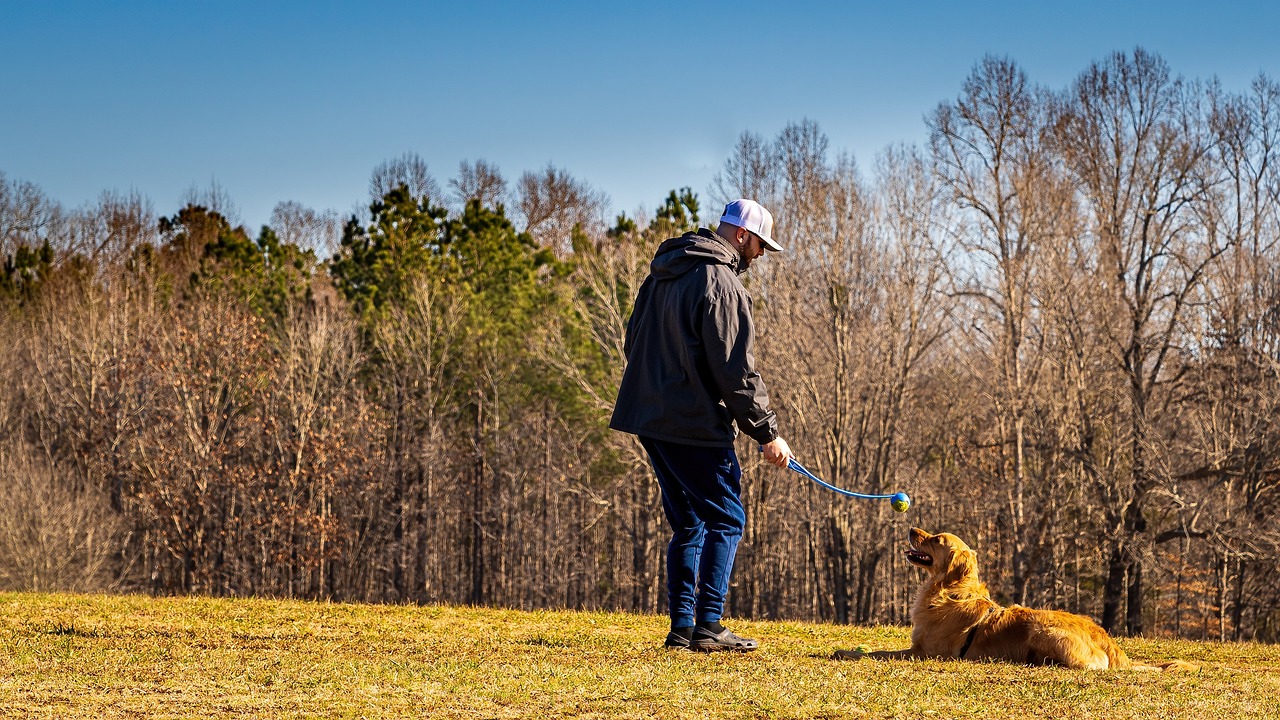
Using Positive Reinforcement
When it comes to training your dog, nothing beats the power of positive reinforcement. This method is not just about giving treats; it’s about creating a rewarding experience that motivates your furry friend to learn and grow. Imagine this: you’re at a party, and every time you do a little dance, someone hands you a cookie. Wouldn’t you be more likely to dance again? That’s the essence of positive reinforcement for dogs!
First and foremost, it’s essential to understand what motivates your dog. Some dogs are food-driven, while others might respond better to praise or playtime. This can vary widely from one pup to another, which is why getting to know your dog’s preferences is crucial. Once you identify what makes their tail wag, you can tailor your training approach accordingly. For example, if your dog loves treats, you might use small, tasty morsels as rewards every time they successfully navigate a section of the maze.
Here are some effective ways to implement positive reinforcement during maze training:
- Immediate Rewards: Always reward your dog immediately after they complete a task. This helps them connect the dots between their actions and the rewards.
- Variety in Rewards: Mix it up! Use treats, toys, and verbal praise to keep your dog excited and engaged. This prevents them from getting bored with the same old rewards.
- Gradual Increase in Challenges: As your dog becomes more adept at navigating the maze, increase the complexity of the tasks. Continue to reward them for their efforts, reinforcing their learning.
Additionally, it’s important to celebrate small victories. If your dog successfully completes a portion of the maze, shower them with praise and affection. A simple “Good job!” or a pat on the head can go a long way in building their confidence. Remember, training should be a fun and enjoyable experience for both you and your dog.
Moreover, keep in mind that patience is key. Some dogs may take longer to grasp the concept of navigating a maze, and that’s perfectly okay! Celebrate their progress, no matter how small, and be ready to adjust your rewards based on their responses. If they seem to lose interest, consider changing the reward system or introducing new challenges to reignite their enthusiasm.
In conclusion, using positive reinforcement is a fantastic way to encourage your dog to navigate a maze successfully. By creating a fun, rewarding training environment, you not only enhance their problem-solving skills but also strengthen the bond between you and your furry companion. So, grab those treats, get ready to cheer, and watch your dog shine in their maze adventures!
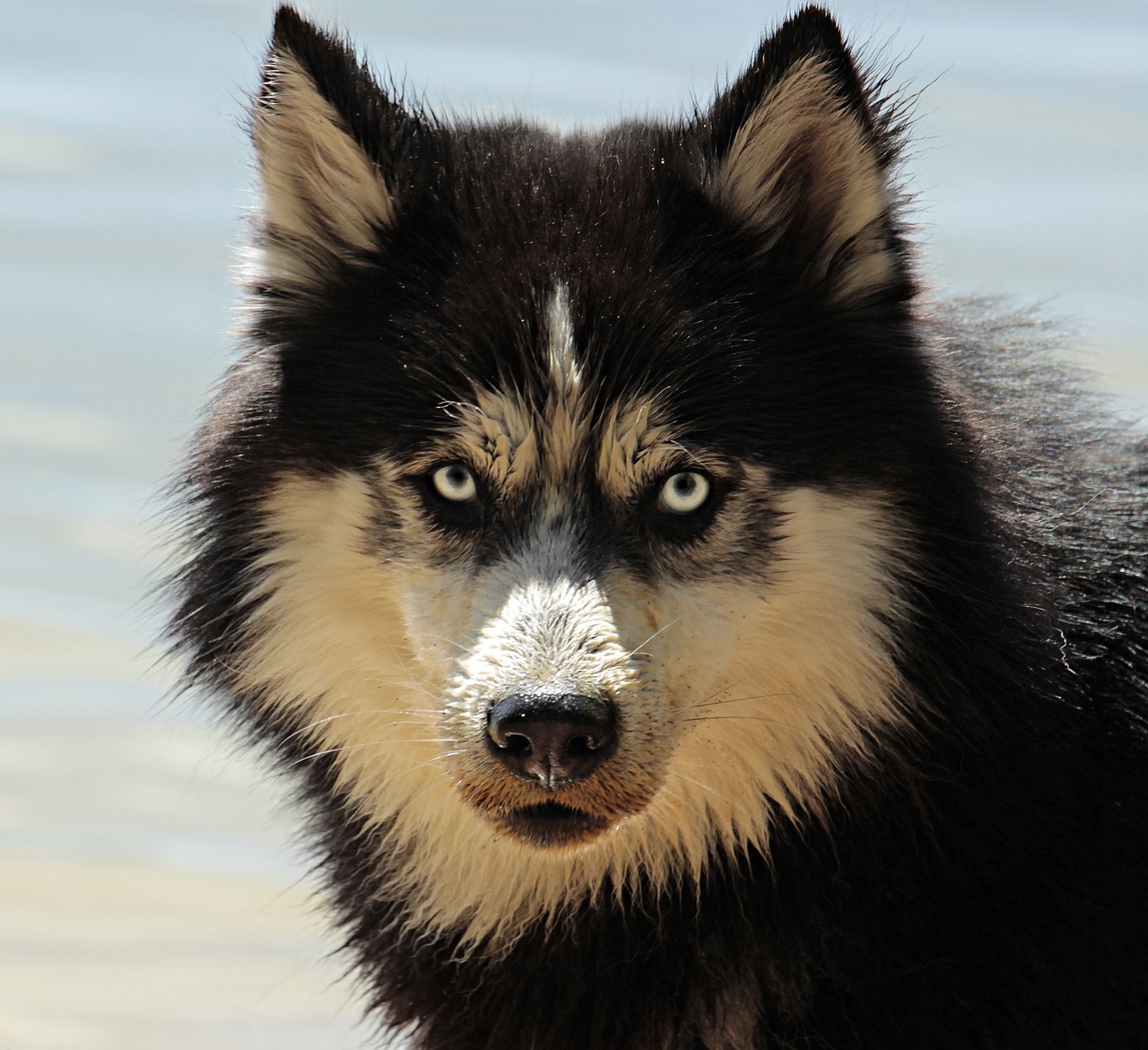
Gradual Introduction to the Maze
When it comes to teaching your dog to navigate a maze, patience and progression are key. Just like humans, dogs need to build their confidence gradually. So, why not start with a simple maze design that’s easy to understand? This initial step is crucial because it allows your furry friend to grasp the concept of navigating through obstacles without feeling overwhelmed. Imagine being thrown into a complex puzzle without any guidance—confusing, right? The same goes for your dog!
Begin with a basic layout that features wide paths and clear turns. You can use simple materials like cardboard or soft barriers to create a low-stress environment. As your dog successfully maneuvers through the easy maze, you’ll notice their excitement and eagerness to explore grow. It’s like watching a child take their first steps; each little victory deserves a celebration!
Once your dog masters the simple maze, you can gradually increase the complexity. Start by adding more twists and turns or introducing obstacles that require your dog to think critically. For example, you might create a fork in the path where they have to decide which way to go. This not only enhances their problem-solving skills but also keeps the training stimulating and fun. You can implement a gradual increase in difficulty using the following structure:
| Maze Complexity Level | Description | Duration |
|---|---|---|
| Level 1 | Simple straight paths with few turns | 5-10 minutes |
| Level 2 | Wider paths with minor obstacles | 10-15 minutes |
| Level 3 | Narrow paths with multiple turns | 15-20 minutes |
| Level 4 | Complex maze with decision points | 20-30 minutes |
As your dog progresses, it’s important to keep the sessions short and engaging. Dogs have a limited attention span, so mixing up the training with breaks or playtime can keep them motivated. Think of it like a game; you wouldn’t want to play a game that drags on forever, would you? Incorporate some fun elements like toys or treats to make the experience even more rewarding.
Lastly, always pay attention to your dog's body language. If they seem frustrated or lose interest, it might be time to scale back and revisit an easier level. Remember, the goal is to make maze navigation a fun and rewarding experience. With each successful navigation, your dog will not only learn but also grow more confident in their abilities. So, take it slow, celebrate the small wins, and enjoy the journey together!
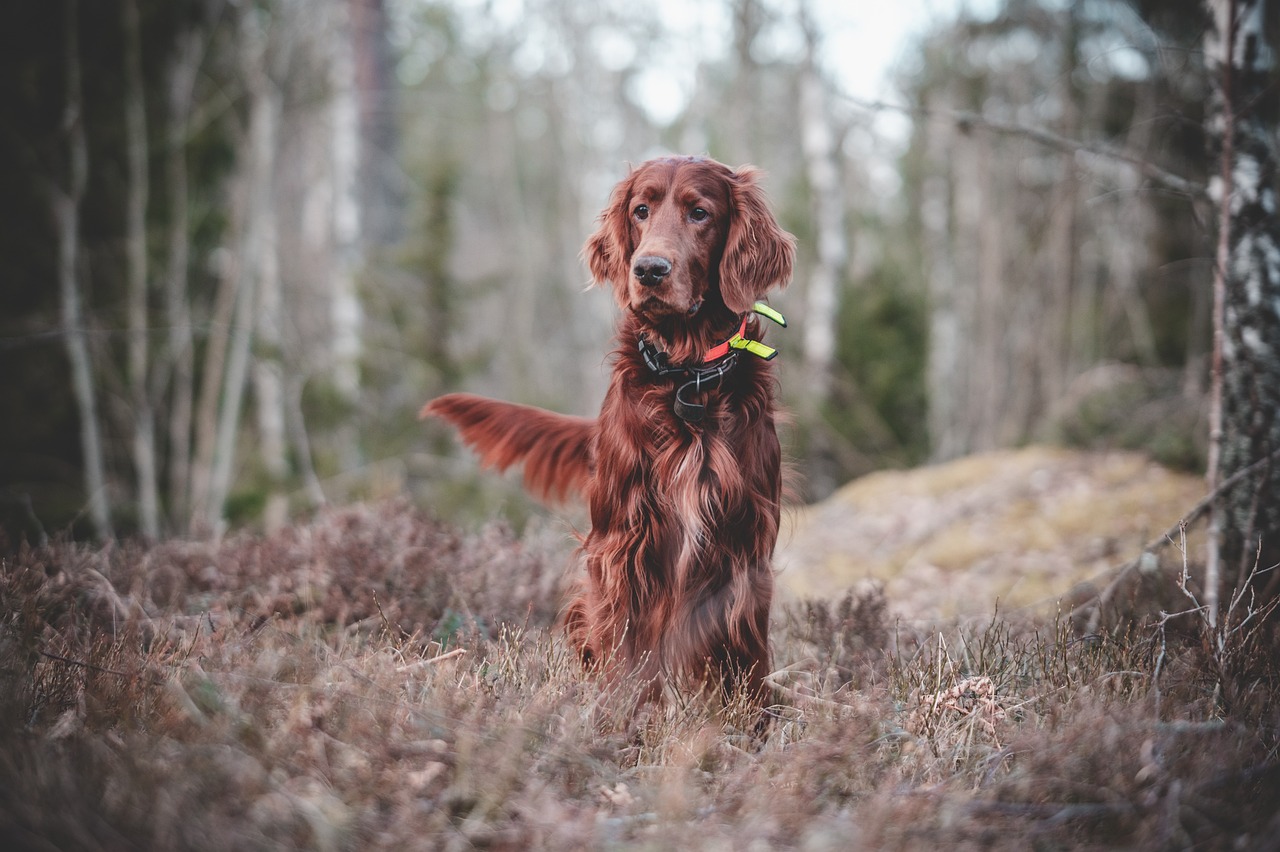
Incorporating Play into Training
When it comes to training your dog to navigate a maze, one of the most effective strategies is to incorporate play into the process. Dogs are naturally playful creatures, and by turning training into a game, you can significantly enhance their enthusiasm and engagement. Imagine your dog, tail wagging and eyes sparkling, as they tackle a maze filled with twists and turns. The excitement of play not only makes the experience enjoyable but also fosters a deeper bond between you and your furry friend.
To begin, consider using toys and treats as motivational tools. For instance, you can place your dog's favorite toy at the end of the maze or scatter treats throughout the course. This not only encourages them to navigate the maze but also makes them associate the challenge with fun rewards. As they successfully find their way, the joy of discovery will keep them coming back for more!
Another great way to incorporate play is through interactive games. Try setting up mini-challenges within the maze where your dog has to perform specific tasks, like jumping over small obstacles or finding hidden treats. This adds an element of surprise and keeps their minds sharp. You could even introduce a timer to see how quickly they can complete the maze, turning it into a friendly competition between you and your pup. Just remember, the goal is to keep it light-hearted and fun!
Moreover, you can use social play to enhance the maze navigation experience. Invite a friend with a dog to join the training session. This not only adds a social element but also encourages your dog to perform better, as they often want to impress their canine companions. Watching another dog navigate the maze can also spark curiosity and motivate your dog to try harder.
It's essential to keep the sessions short and lively. Dogs have a limited attention span, so aim for 15-20 minute training sessions filled with play. If they start to lose interest, take a break and come back later. This approach ensures that your dog remains excited and eager to learn.
Lastly, always celebrate their successes, no matter how small. A simple cheer, a pat on the back, or a tasty treat can go a long way in reinforcing positive behavior. Remember, the more fun you have together, the more likely your dog will be to embrace the maze challenges with enthusiasm. So grab those toys, scatter those treats, and watch your dog thrive in a playful training atmosphere!
- Q: How long should each training session be?
A: Aim for 15-20 minutes to keep your dog engaged without losing interest. - Q: What if my dog gets frustrated?
A: If your dog shows signs of frustration, take a break and simplify the maze before gradually increasing the difficulty again. - Q: Can I use any type of toy for motivation?
A: Yes! Use your dog's favorite toys, but ensure they are safe and appropriate for play. - Q: Is it okay to train with other dogs present?
A: Absolutely! Social play can motivate your dog and make training more enjoyable.

Monitoring Progress and Adjusting Techniques
Training your dog to navigate a maze is not just about setting up a challenging course; it's also about observing and adapting your methods based on their performance. Just like humans, each dog learns at their own pace, and what works for one may not work for another. Regularly monitoring your dog's progress is crucial to ensure they're not only learning but also enjoying the process. So, how do you keep track of their development?
First and foremost, it’s essential to establish a baseline. Start by noting how your dog reacts to the maze on their first few attempts. Record their time taken to complete the maze, any struggles they face, and their overall enthusiasm. This initial observation will serve as a reference point to measure improvements. You might find it helpful to create a simple table to track their progress:
| Date | Time Taken | Struggles Faced | Overall Enthusiasm (1-10) |
|---|---|---|---|
| Day 1 | 2 minutes | Confused at turns | 5 |
| Day 3 | 1.5 minutes | Better at turns | 7 |
| Day 5 | 1 minute | No struggles | 9 |
This table not only helps you visualize their progress but also allows you to identify patterns. For example, if you notice a sudden drop in enthusiasm, it might be time to reassess your approach. Are the challenges becoming too difficult? Are you using the right rewards? Paying close attention to these factors can make all the difference in your dog’s learning experience.
As you monitor their progress, be prepared to adjust your techniques. If your dog consistently struggles with certain sections of the maze, consider simplifying those areas or providing additional guidance. You might incorporate verbal cues or even gently guide them through the tricky spots. On the other hand, if they breeze through a section, it may be time to amp up the challenge. This could mean adding obstacles or increasing the maze's complexity to keep things interesting.
Another important aspect of monitoring is to celebrate the small victories. Every time your dog successfully navigates a new section or improves their time, make sure to show them how proud you are! This not only boosts their confidence but also reinforces the positive association with the maze. Remember, training should be a fun and rewarding experience for both of you.
In summary, keeping a close eye on your dog's progress and being willing to adjust your training techniques as needed is key to successful maze navigation training. By creating a supportive and engaging environment, you’re not only helping your dog learn but also strengthening the bond you share. After all, the journey of training is just as important as reaching the destination!
- How long should I train my dog each day? It’s best to keep training sessions short but frequent—around 10 to 15 minutes, a few times a day, to maintain their interest and energy.
- What if my dog seems frustrated or bored? If your dog appears frustrated, take a step back and simplify the maze. If they seem bored, try increasing the complexity or introducing new challenges.
- Is it okay to use treats during training? Absolutely! Treats can be a great motivator. Just ensure they're healthy and appropriate for your dog's diet.
- Can all dogs learn to navigate a maze? Most dogs can learn to navigate a maze, but some may require more time and patience than others. Tailor your approach to fit your dog's unique personality and learning style.

Safety Considerations During Training
When it comes to training your dog to navigate a maze, safety should always be your top priority. Just like you wouldn’t want to send a child into a crowded amusement park without a safety net, the same goes for your furry friend. A maze can be a fun and stimulating environment, but it can also present potential hazards if not properly managed. Here are some key safety considerations to keep in mind:
First and foremost, ensure that the maze is constructed from non-toxic materials. Dogs are naturally curious creatures, and they may be tempted to chew on the walls or obstacles. Using materials that are safe for pets will prevent any health issues that could arise from ingestion. Additionally, make sure the maze is sturdy and well-built so that it can withstand your dog’s playful antics without collapsing.
Next, consider the size and layout of the maze. A maze that is too small can lead to frustration for your dog, while one that is too large may overwhelm them. Start with a design that is manageable, allowing your dog to navigate it comfortably. As they become more adept at solving the maze, you can gradually increase its size. This gradual approach not only helps in building their confidence but also reduces the risk of accidents.
Another essential aspect is to keep an eye out for sharp edges or protrusions that could cause injury. Inspect the maze thoroughly before each training session to ensure there are no hazards. If you’re using any props or obstacles, make sure they are smooth and free of any sharp points. A little precaution goes a long way in ensuring a safe and enjoyable training experience.
Furthermore, always supervise your dog during training sessions. Even the most well-behaved dogs can get into mischief if left unattended. By keeping a watchful eye, you can quickly intervene if your dog seems to be struggling or if they approach a potentially dangerous area of the maze. This supervision also allows you to provide immediate feedback and encouragement, reinforcing their positive behavior.
Finally, it’s crucial to recognize your dog’s limits. Just like humans, dogs can become tired or frustrated, which can lead to accidents. Watch for signs of exhaustion or stress, such as excessive panting or whining. If you notice these signs, it’s best to take a break and allow your dog to rest. Training should be a fun and positive experience, not a source of anxiety.
In summary, keeping safety at the forefront of your maze training will not only protect your dog but also enhance their overall experience. By ensuring a safe environment, you can focus on building their problem-solving skills and creating lasting memories together.
- What materials are safe for constructing a dog maze? Use non-toxic, durable materials like plastic or untreated wood to ensure your dog's safety.
- How can I tell if my dog is overwhelmed during training? Look for signs such as excessive panting, whining, or disinterest in the maze.
- Is it necessary to supervise my dog during maze training? Yes, supervision is essential to ensure your dog's safety and to provide immediate feedback.
- What should I do if my dog gets stuck in the maze? Stay calm and gently guide them out without causing panic; always be ready to assist.
Frequently Asked Questions
- How long does it take to train my dog to navigate a maze?
The time it takes to train your dog to navigate a maze can vary significantly depending on your dog's age, breed, and previous training experience. Generally, with consistent practice and positive reinforcement, you can see progress within a few weeks. However, remember that every dog learns at their own pace, so patience is key!
- What types of mazes are best for training?
When choosing a maze for training, start with simple designs made from safe materials like cardboard or lightweight plastic. As your dog becomes more adept, you can introduce more complex mazes or even DIY options that challenge their problem-solving skills. Just ensure that the maze is safe and suitable for your dog's size!
- Can all dog breeds learn to navigate mazes?
Absolutely! While some breeds may excel at problem-solving due to their intelligence and energy levels, all dogs can learn to navigate mazes with the right approach. It's essential to tailor your training methods to suit your dog's unique personality and learning style.
- How do I use positive reinforcement effectively?
Positive reinforcement involves rewarding your dog for desired behaviors, which encourages them to repeat those actions. Use treats, praise, or playtime as rewards when your dog successfully navigates parts of the maze. The key is to reward them immediately after they perform the desired action to create a strong association.
- What should I do if my dog gets frustrated during training?
If you notice your dog becoming frustrated, take a step back and simplify the maze or reduce the difficulty of the task. Gradually reintroduce challenges as your dog gains confidence. Remember, the goal is to make learning fun and engaging, not stressful!
- Are there any safety concerns I should be aware of?
Yes, safety is paramount when training your dog. Always supervise your dog while they navigate the maze to prevent accidents. Ensure the maze is free of sharp edges or hazardous materials, and provide a comfortable space for your dog to explore without the risk of injury.
- Can I incorporate toys into the maze training?
Definitely! Incorporating toys can make maze navigation more exciting for your dog. You can hide their favorite toys or treats within the maze to encourage exploration and motivate them to solve the puzzle. This adds an element of playfulness that can enhance their overall training experience.
- How can I monitor my dog's progress?
Keep track of your dog's performance by noting their successes and challenges during each training session. You can create a simple chart to record their progress, which will help you identify patterns and adjust your training techniques as needed. Regular assessments will ensure that your dog remains engaged and challenged appropriately.




